One of the important goals of a scrum team is to continuously improve. A sprint retrospective brings the team together to review the previous sprint, and think of the next steps in the project. This is usually an opportunity for the team to assess how well they have been working together and come up with ways to better their collaboration.
In this article, you’ll get an overview of sprint retrospective and find a handy tool to hold the meeting. Let’s dive in.
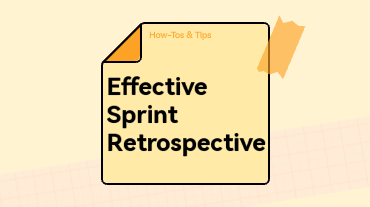
What Is a Sprint Retrospective
A sprint retrospective is a kind of meeting within the agile framework that involves scrum teams reflecting on what went well and what needs to be improved for the next sprint. These types of meetings are essential for the continuous improvement of the sprint process. Every sprint retrospective ensures that key learnings are properly incorporated for next time.

If your team uses scrum, it can benefit from conducting a retrospective meeting at the end of every sprint. Essentially, scrum is a type of agile methodology that is common among product, software development, and engineering teams. Any teams aiming to build and iterate quickly can benefit from regular scrum retrospective meetings. For teams that do not work in sprints, conducting retrospective meetings at the end of the project can also help to learn from the experiences and incorporate the findings into the next project.
What Are the Main Purposes of Sprint Retrospective
In Scrum, a sprint usually takes about two weeks of work to achieve specified deliverables. When you organize work this way, your team gets the focus they need to work quickly. Sprint retrospective also provides the team with the opportunity to improve and iterate their process in every subsequent sprint. By giving the team a chance to reflect on the progress and continuously improve their sprint process, sprint retrospective is a vital part of the scrum process.
The sprint retrospective is a vital part of the agile process that provides an outlet for teams to discuss how they can improve. In this regard, the main purposes of a sprint retrospective include:
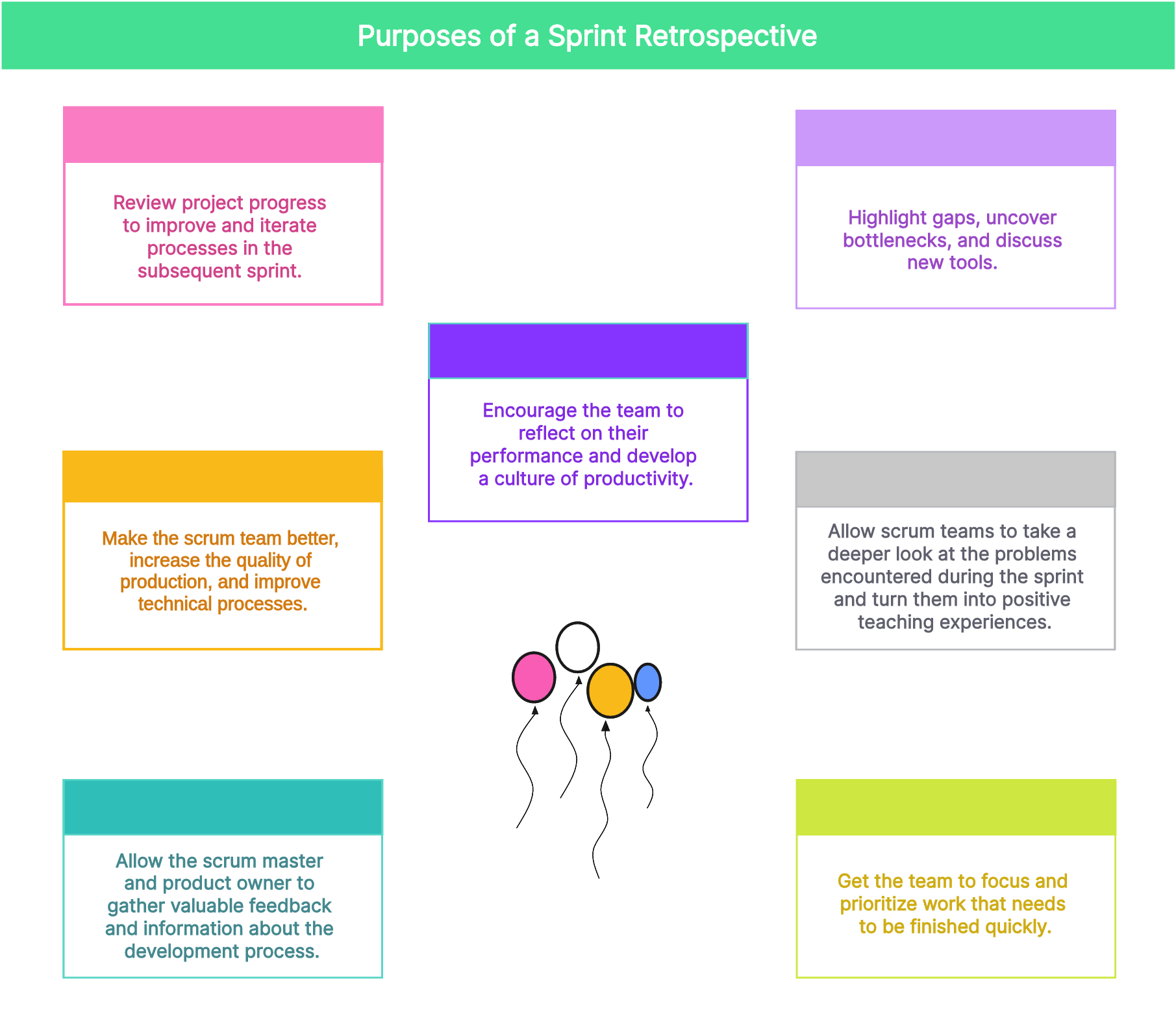
- Review project progress to improve and iterate processes in the subsequent sprint.
- Highlight gaps, uncover bottlenecks, and discuss new tools.
- Make the scrum team better, increase the quality of production, and improve technical processes.
- Allow scrum teams to take a deeper look at the problems encountered during the sprint and turn them into positive teaching experiences.
- Allow the scrum master and product owner to gather valuable feedback and information about the development process.
- Get the team to focus and prioritize work that needs to be finished quickly.
- Encourage the team to reflect on their performance and develop a culture of productivity.
Since the retrospective meeting is done at the end of each sprint, it offers the team an opportunity to assess their progress. With agile being about learning and iterating, sprint retrospective allows teams to turn their experiences into actionable improvements.
What Is the Difference between Sprint Review and Sprint Retrospective
Both sprint review and sprint retrospective are important components of the scrum process. On one hand, a sprint review meeting happens at the end of the sprint intending to improve processes. The meeting creates an opportunity for the scrum or agile team to showcase the work they have accomplished. The team presents their accomplishments with demos that help cross-functional stakeholders to visualize and have a clear understanding of each deliverable.
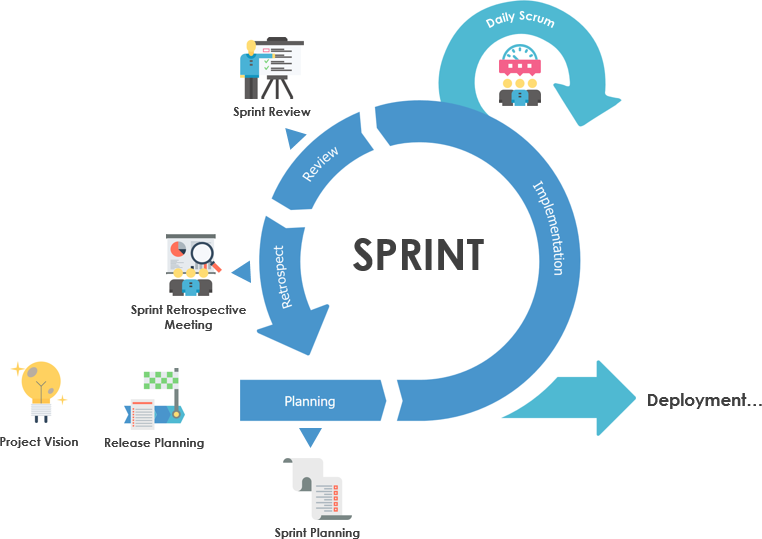
Source: Visual-paradigm
On the other hand, the sprint retrospective aims to identify processes that worked and those that did not during the sprint. Unlike the sprint review, this meeting focuses less on specific deliverables and more on process improvements that will optimize the sprint workflow of the team.
How Do You Conduct a Sprint Retrospective Meeting
The way you conduct a sprint retrospective will depend on the nature of your project and the team members involved. While there is no single way of holding a retrospective meeting, you can tailor and refine it to your sprint retrospective agenda.
With a standard agenda template like the one provided by Boardmix, it is easy to share details with your team and collect feedback in advance. The agenda will cover the following basic steps:
1. Set the Goal of the Retrospective Meeting
When you establish the goals of your scrum retrospective meeting up front, your team will be able to focus on the task at hand. Setting clear goals also ensure that everyone is working towards the same aims. A simple brainstorming session will help you come up with the goals to guide every retrospective meeting going forward. For instance, your team may focus on providing constructive and candid feedback to improve the sprint planning process.
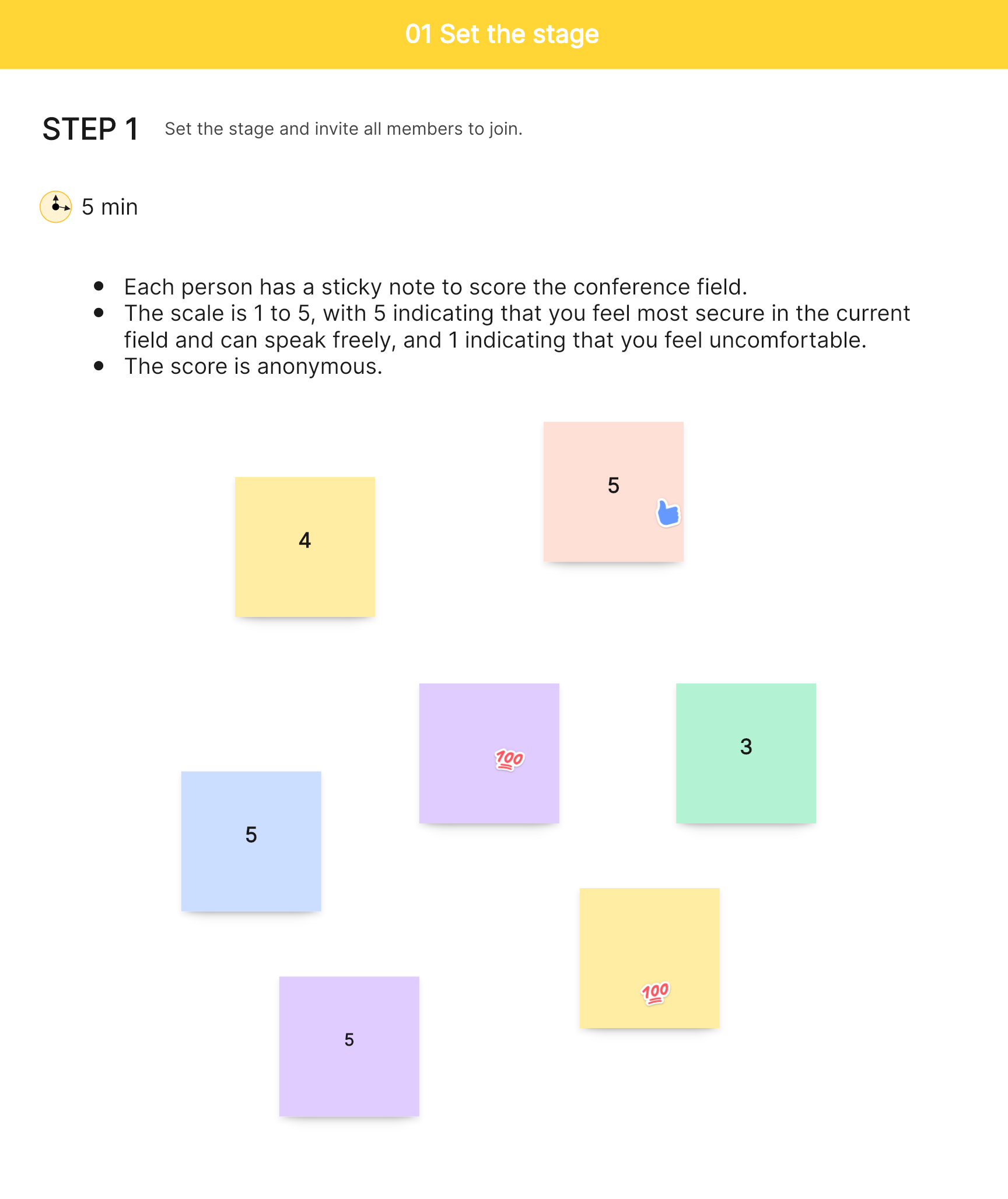
2. Collect Feedback from the Team
Your scrum team is the best source of information that can help to improve your sprint process. Since they are involved in the day-to-day work, their input in the sprint retrospective will make sure the sprint runs smoothly. Gathering feedback directly from the team will help in ensuring the sprint process is working for the needs and styles of everyone involved. Send the questions a day or two before the sprint retrospective meeting alongside your meeting agenda created with the Boardmix sprint retrospective template.
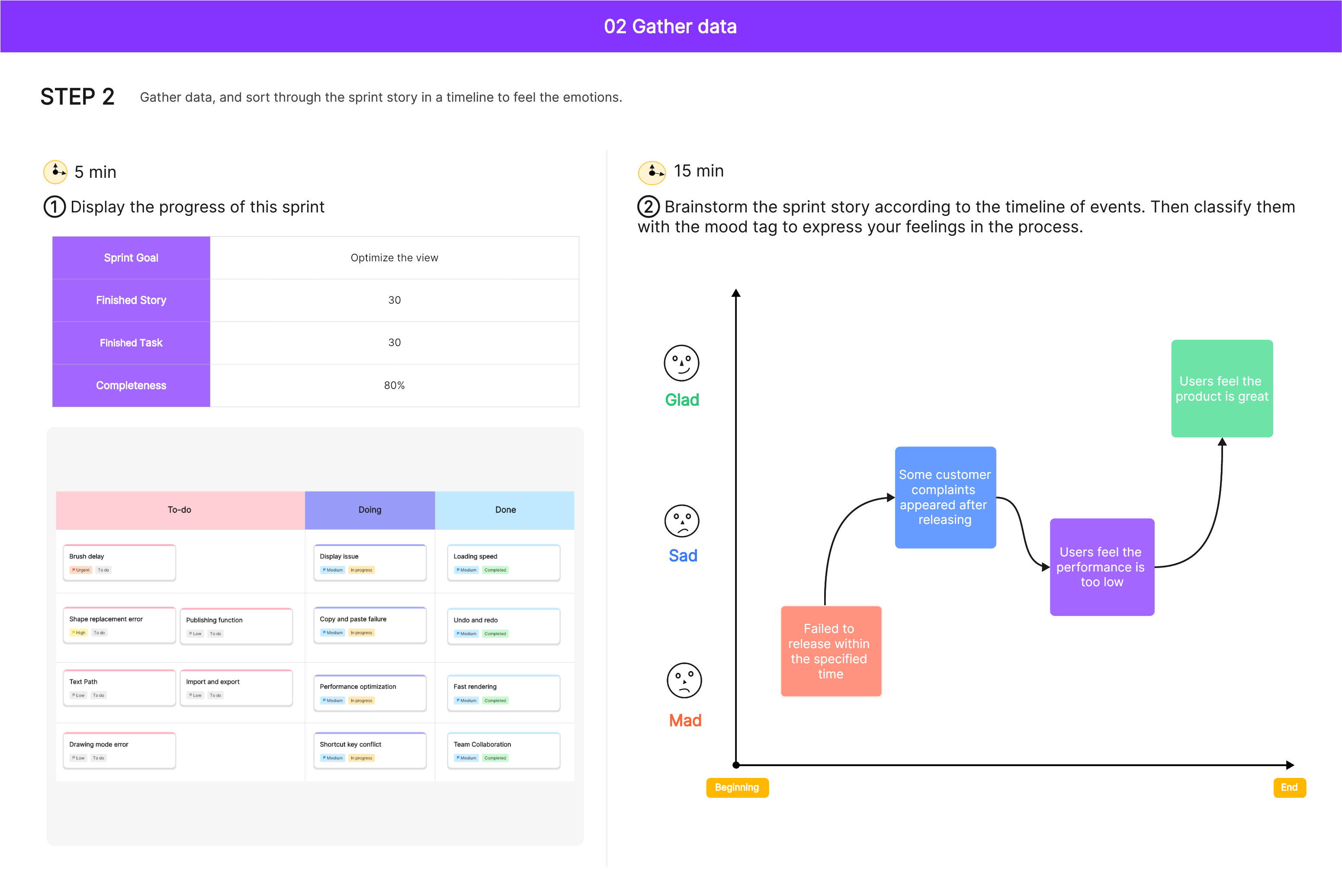
3. Draw Insights
After gathering data from your team asynchronously, analyze it to identify common patterns and threads during the retrospective meeting. This will include pain points shared by multiple team members, key lessons to carry into future sprints, and working practices from the previous sprint. The patterns will help in prioritizing the action items that the team should set for the next sprint. Consider sharing your screen or collaborating on a whiteboard or shared document with the entire team during the retrospective meeting. This will allow team members to take notes and give feedback, which will encourage engagement to turn conversations into actionable steps.
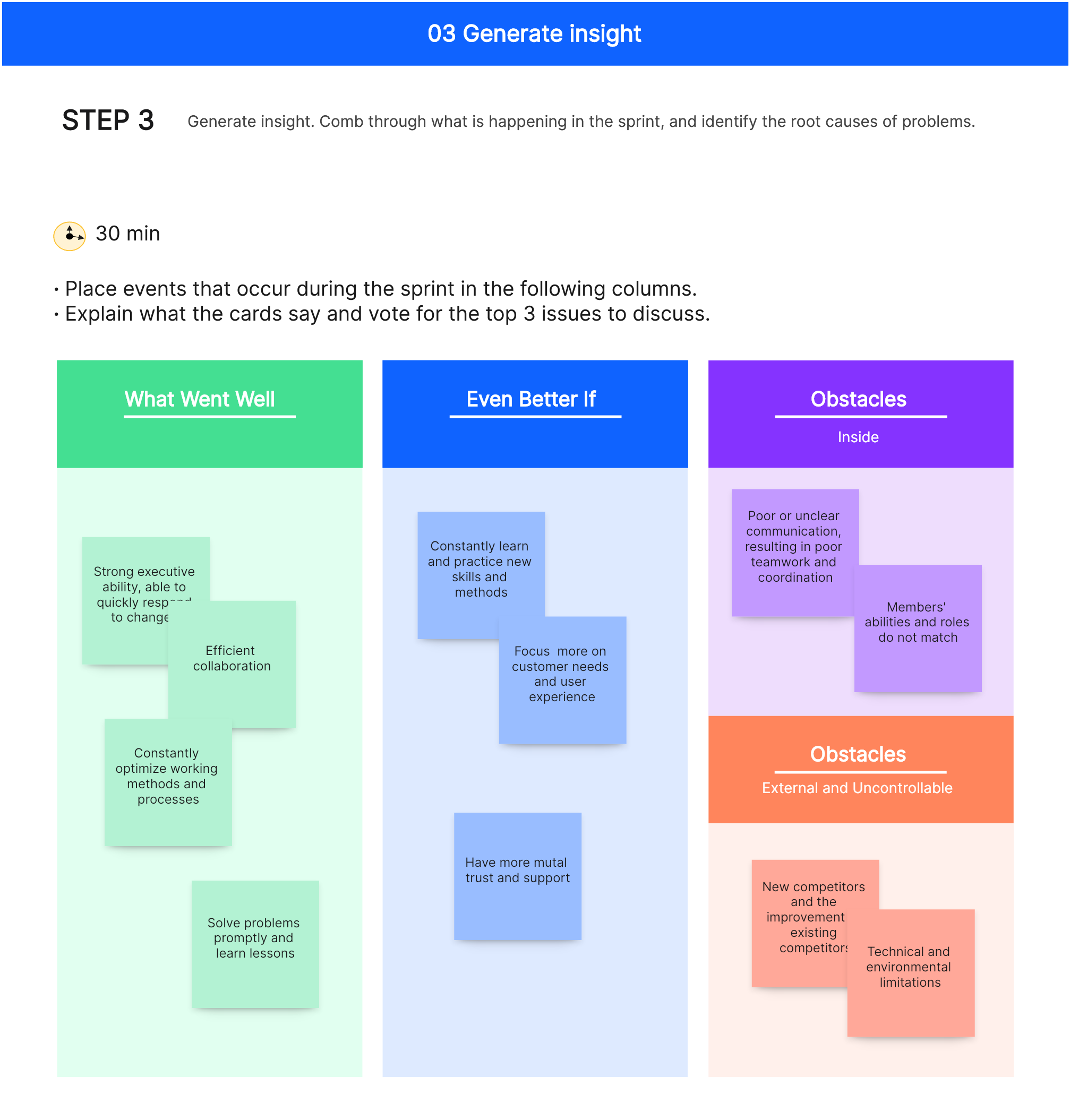
4. Set Action Items
The next step is to create action items that address common pain points. These include the concrete next steps for the team with clear owners and deadlines. By setting action items during retrospective meetings, you will be providing clarity on who should be doing what and when. This also helps the team to understand the importance of each action item to the success of the group. For instance, if the team does not have sufficient information to complete tasks, the appropriate action item would be to collect more context from stakeholders when holding sprint backlog refinement.
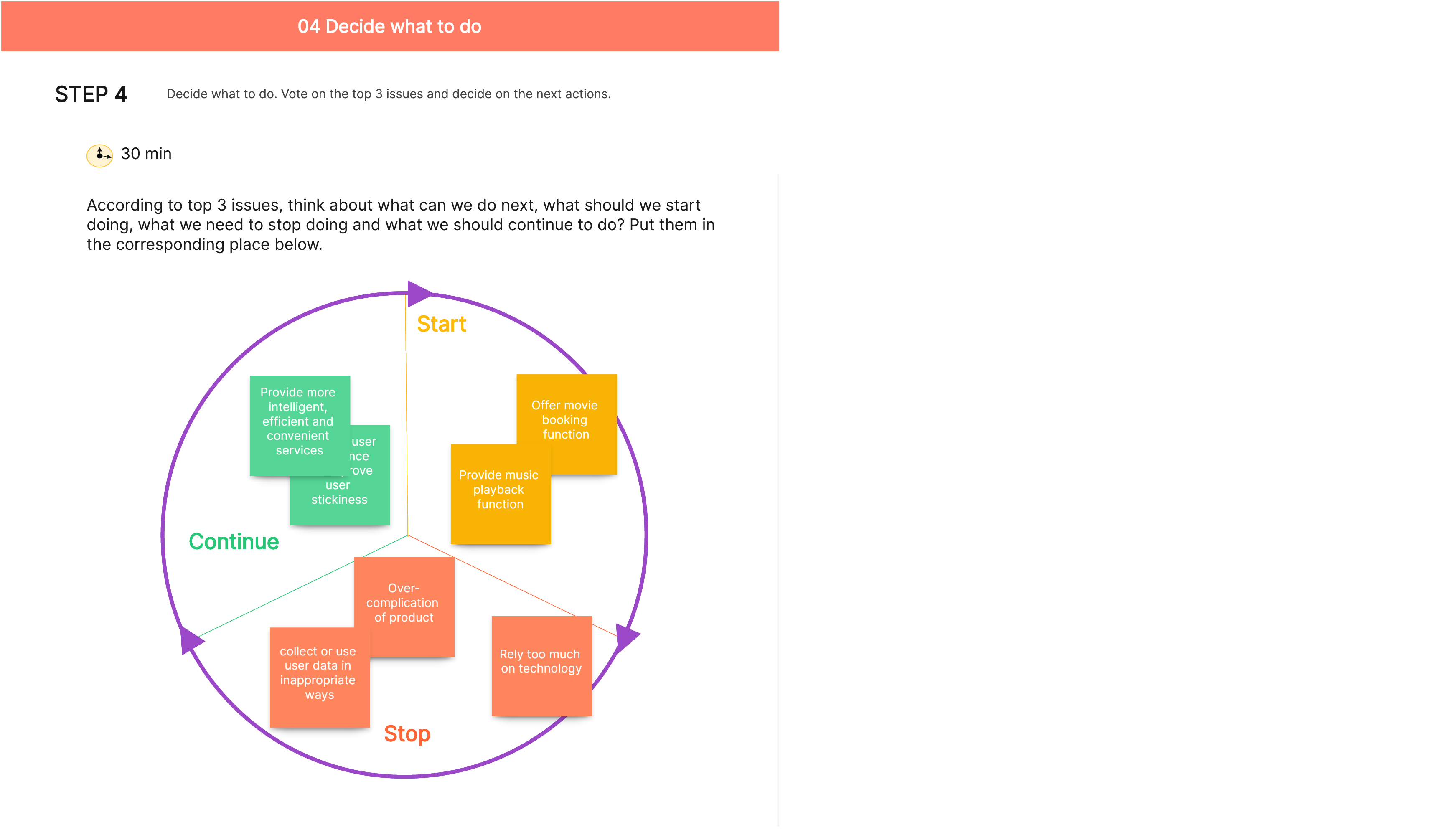
5. Close the Retrospective Meeting
At the end of your sprint retrospective, set aside a few minutes to close the meeting. Briefly summarize the retrospective meeting, thank everyone for their participation, and come up with ways to share action items with the group. By closing your sprint retrospective formally, you will be demonstrating that you value the time and contributions of the team. This is also a way of ensuring that everyone is on the same page.

Where to Hold the Sprint Retrospective
You do not have to start from scratch for a successful sprint retrospective. Boardmix’s ready-made sprint retrospective template will help you to discuss at length both positive and negative feedback. With a range of online tools available to boost collaboration efficiency, the template will allow you to plan improvements effectively. Boardmix is now integrated with an AI assistant that will help you plan and hold retrospective meetings with better results. Just try it out now!














